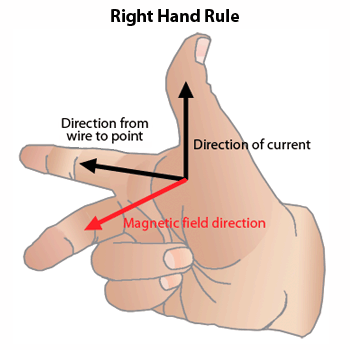Basics of Magnetism
by Ron Kurtus (revised 6 October 2006)
Magnetism is a force of attraction or replusion that acts at a distance. It is due to a magnetic field, which is caused by moving electrically charged particles or is inherent in magnetic objects such as a magnet.A magnet is an object that exhibits a strong magnetic field and will attract materials like iron to it. Magnets have two poles, called the north (N) and south (S) poles. Two magnets will be attacted by their opposite poles, and each will repel the like pole of the other magnet. Magnetism has many uses in modern life.
Questions you may have include:
- What is a magnetic field?
- What are magnets?
- How is magnetism used?
Useful tools: Metric-English Conversion | Scientific Calculator.
Magnetic field
A magnetic field consists of imaginary lines of flux coming from moving or spinning electrically charged particles. Examples include the spin of a proton and the motion of electrons through a wire in an electric circuit.What a magnetic field actually consists of is somewhat of a mystery, but we do know it is a special property of space.

Magnetic field or lines of flux of a moving charged particle
Names of poles
The lines of magnetic flux flow from one end of the object to the other. By convention, we call one end of a magnetic object the N or North-seeking pole and the other the S or South-seeking pole, as related to the Earth's North and South magnetic poles. The magnetic flux is defined as moving from N to S.Magnets
Although individual particles such as electrons can have magnetic fields, larger objects such as a piece of iron can also have a magnetic field, as a sum of the fields of its particles. If a larger object exhibits a sufficiently great magnetic field, it is called a magnet.(See Magnets for more information.)
Magnetic force
The magnetic field of an object can create a magnetic force on other objects with magnetic fields. That force is what we call magnetism.When a magnetic field is applied to a moving electric charge, such as a moving proton or the electrical current in a wire, the force on the charge is called a Lorentz force.
(See Magnetism and the Lorentz Force for more information.)
Attraction
When two magnets or magnetic objects are close to each other, there is a force that attracts the poles together.
Force attracts N to S
Magnets also strongly attract ferromagnetic materials such as iron, nickel and cobalt.(See Magnetic Materials for more information.)
Repulsion
When two magnetic objects have like poles facing each other, the magnetic force pushes them apart.
Force pushes magnetic objects apart
Magnets can also weakly repel diamagnetic materials. (See Magnetic Materials for more information.)MAGNETIC FIELD

the earth's magnetic field

• A region or a space surrounding a magnetized body or current-carrying circuit in which resulting magnetic force can be detected.
• A magnetic field consists of imaginary lines of flux coming from moving or spinning electrically charged particles. Examples include the spin of a proton and the motion of electrons through a wire in an electric circuit.
Magnetic and electric fields
The magnetic and electric fields are both similar and different. They are also inter-related.Electric charges and magnetism similar
Just as the positive (+) and negative (−) electrical charges attract each other, the N and S poles of a magnet attract each other.In electricity like charges repel, and in magnetism like poles repel.
Electric charges and magnetism different
The magnetic field is a dipole field. That means that every magnet must have two poles.On the other hand, a positive (+) or negative (−) electrical charge can stand alone. Electrical charges are called monopoles, since they can exist without the opposite charge.
No comments:
Post a Comment